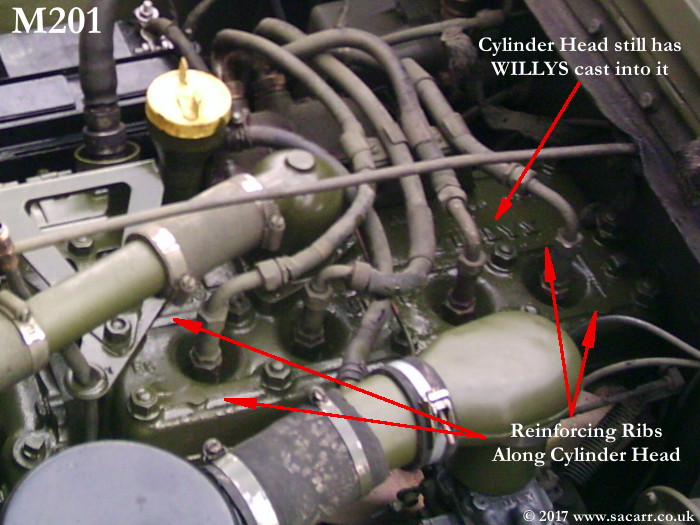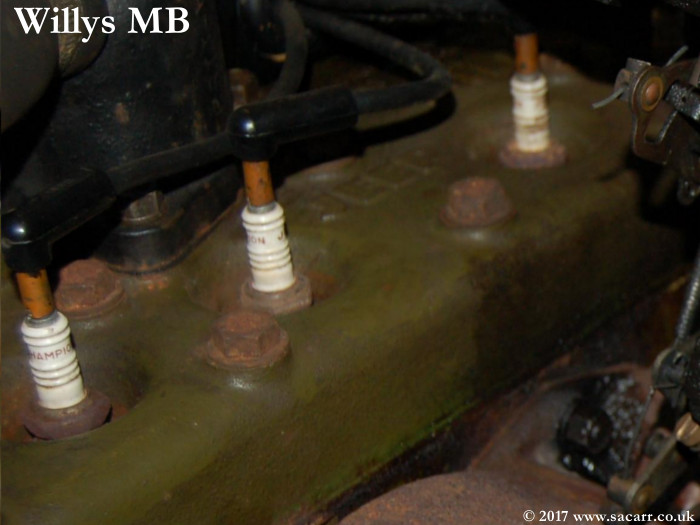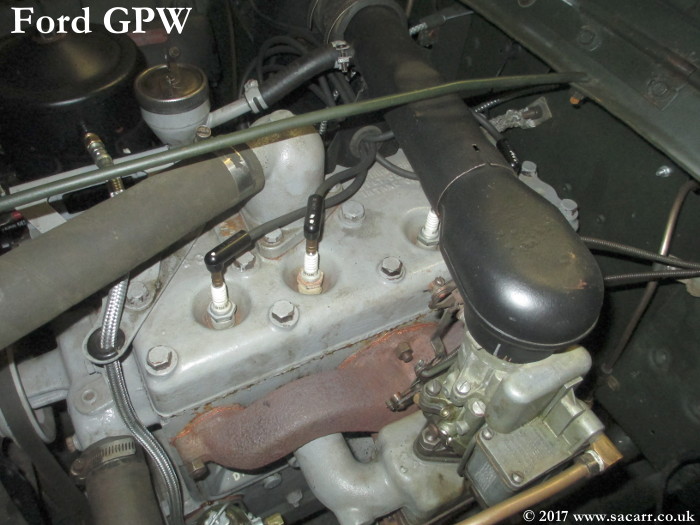| Hotchkiss M201 | Willys MB | Ford GPW |
| Glove
Box Floor
The floor of the glove box on my M201 has two swaged stiffening strips on the glove box floor. As yet, I don't know if this was common to all M201's or whether mine has had a recycled Ford GPW glovebox. The Willys MB glovebox has a flat floor. On the Ford GPW, there are two swaged stiffening strips on the floor. |
||
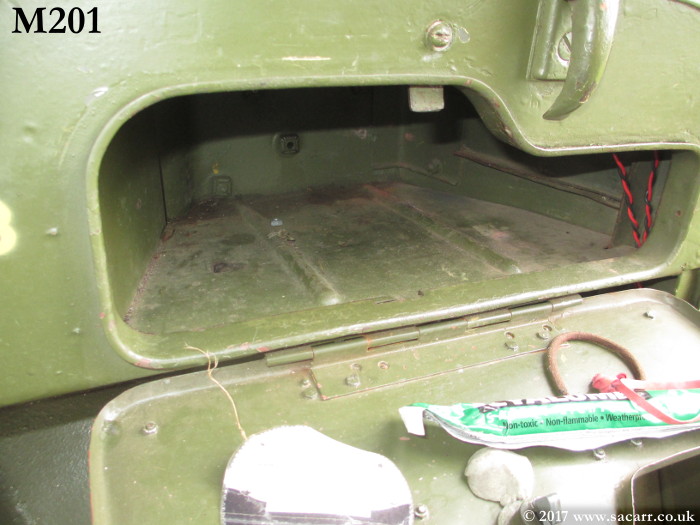 |
 |
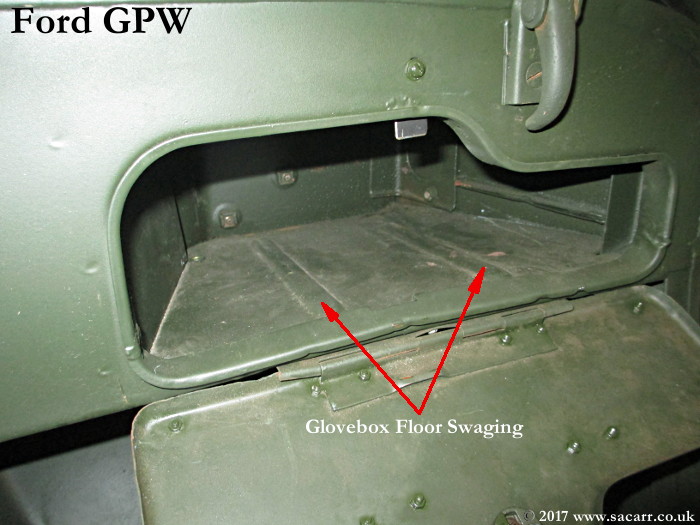 |
| Wheel
Arch Sides
The M201 wheel arch has flat sides and is sometimes seen with multiple holes in the top which were the mounting points for radio trays. The Willys MB wheel arch is similar. The Ford GPW wheel arch has two vertical swaged stiffening ribs in the side. It also has another on the top behind the locker lid. |
||
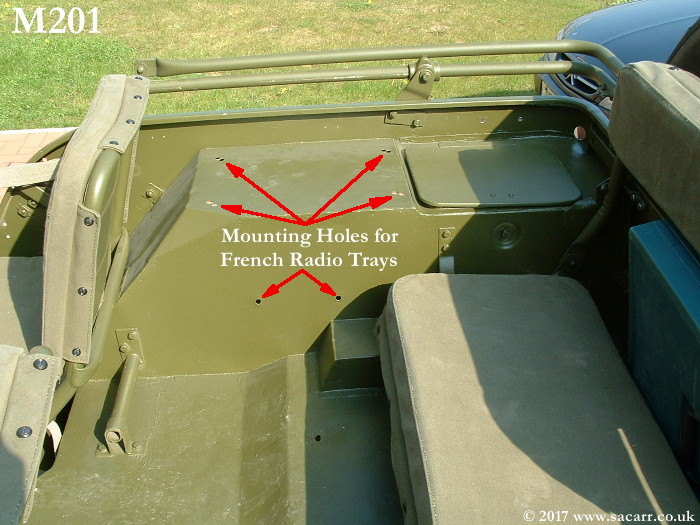 |
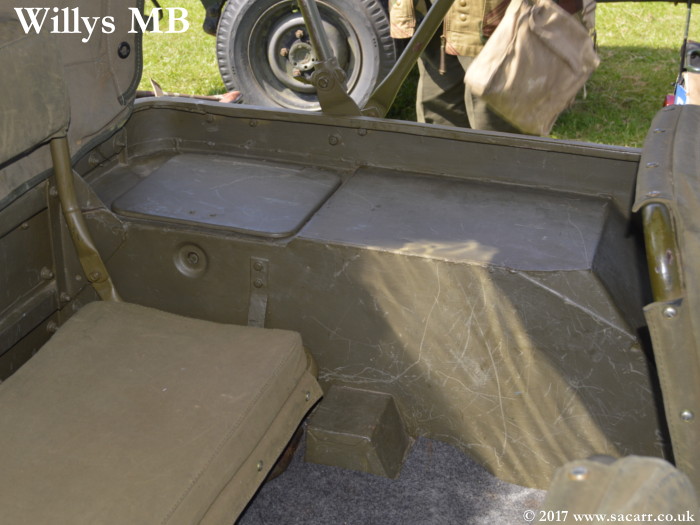 |
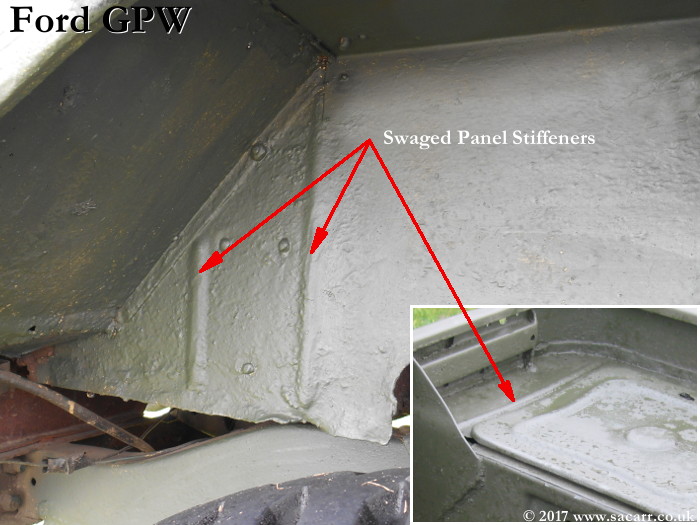 |
| Chassis
Front Cross Member
Both the M201 and Willys MB have a circular section tube for the front cross member of the chassis. The Ford GPW has an inverted 'U' channel for the cross member. |
||
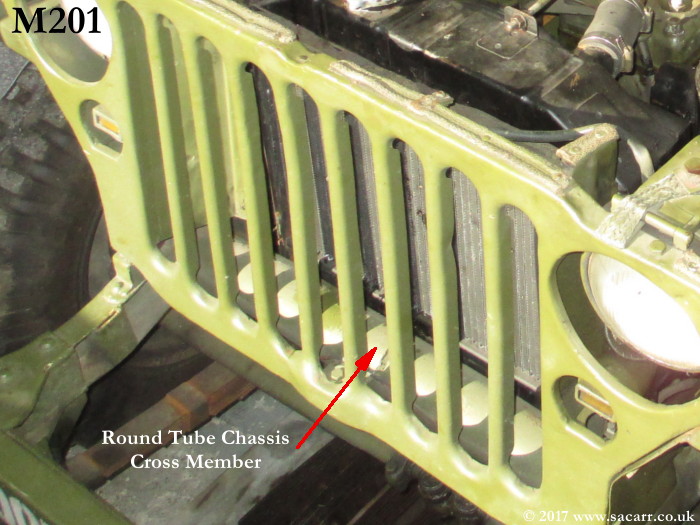 |
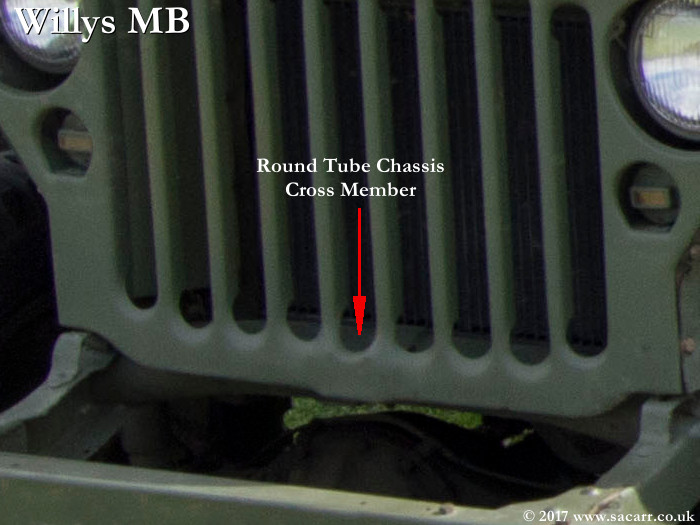 |
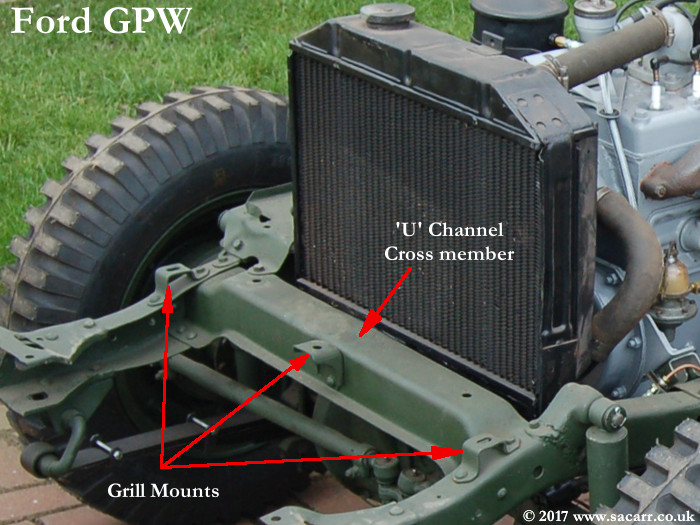 |
| Locker
Lids
Locker lids on the M201 and Willys MB were plain and flat. The Ford GPW had a stiffening ridge all around the lid, embossed outwards and a circular embossed centre. On the Willys and M201, the lid hinge was held in place with nuts and bolts. The Ford hinge was bolted, but the nuts were brazed onto a strip of metal, rather than being individual nuts. |
||
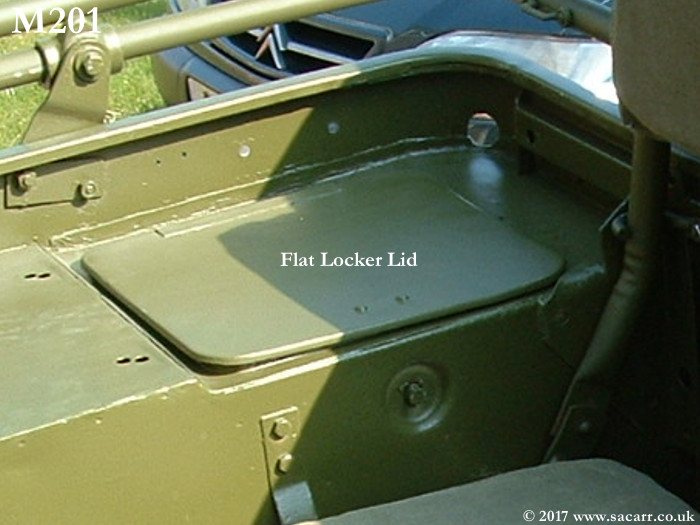 |
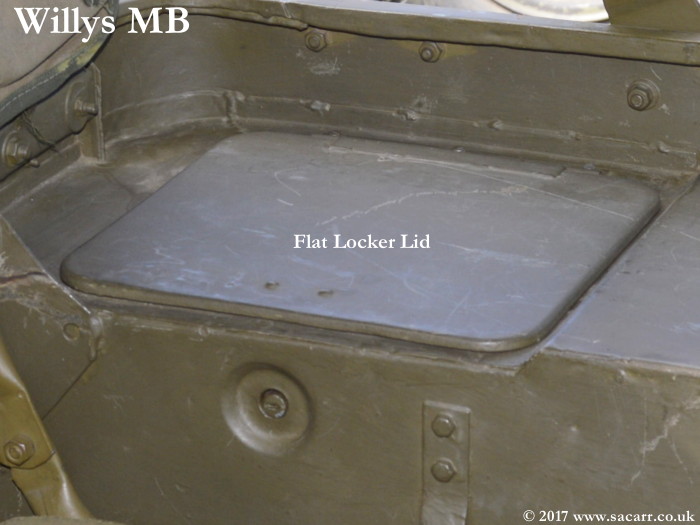 |
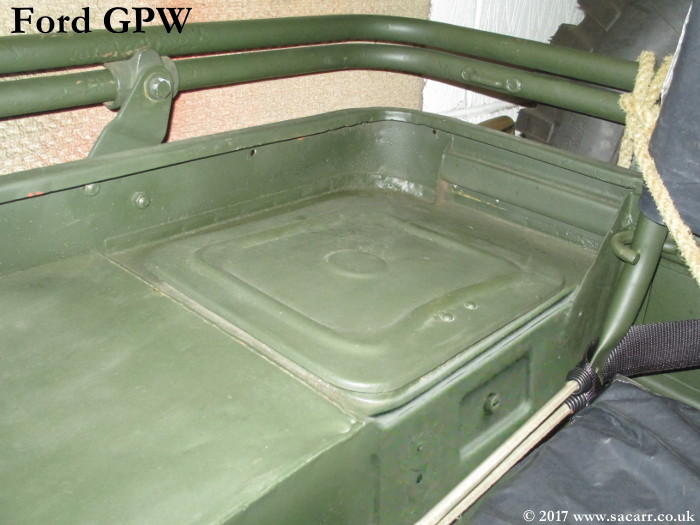 |
| Locker
Catch Recess
The locker catch recess on the M201 and Willys MB were round. On the Ford GPW, it was a rectangle. However, on Ford Jeeps with the ACM type body, they could also have the round recess. The button on the M201 was plain, where as wartime Jeeps had a key lock. |
||
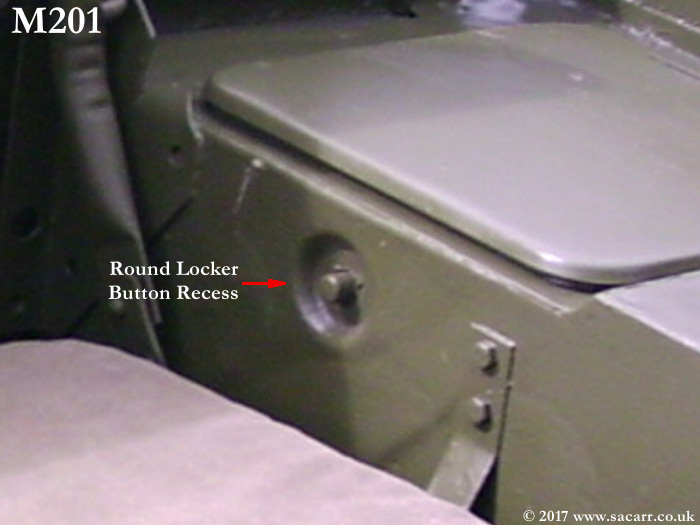 |
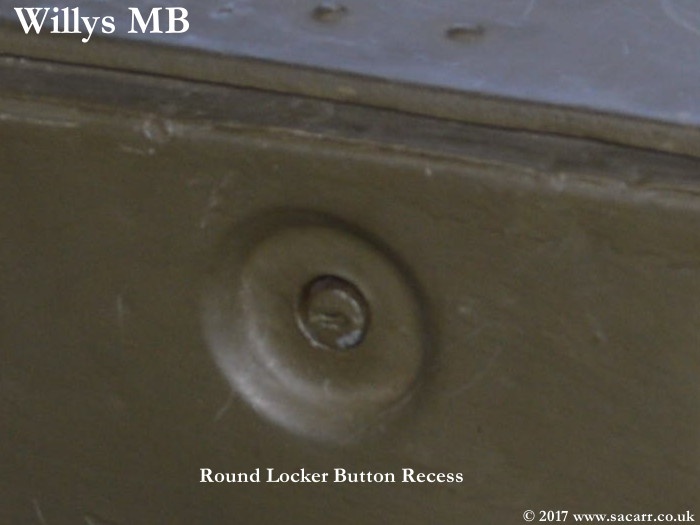
| 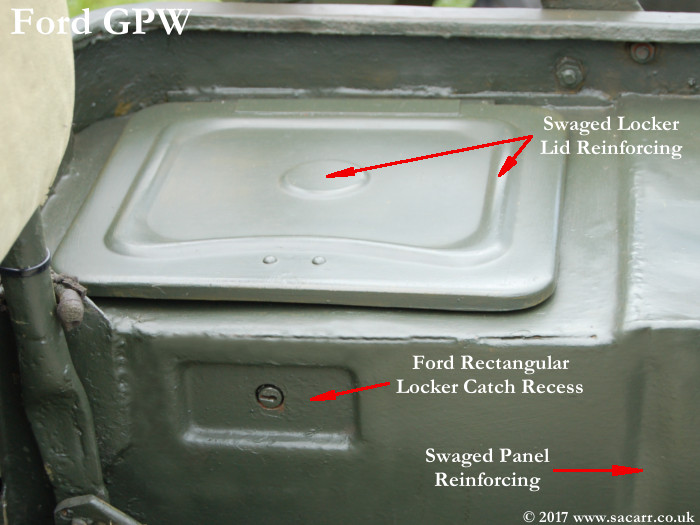 |
| Pintle
Hook 'A' Frame
The M201 'A' frame is a 'U' channel with a broad vertical face and narrow edges to the 'U'. Where the legs of the 'A' meet the chassis, there is a cross member. The MB 'A' frame is also a 'U' channel, and like the M201 frame, there is a cross member. The Ford GPW frame is perforated with four holes along each side to reduce steel useage during wartime. There is no cross member on the GPW. |
||
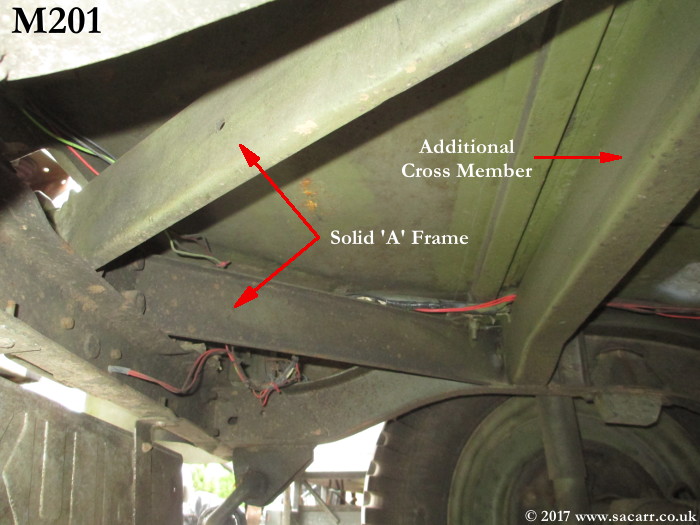 |
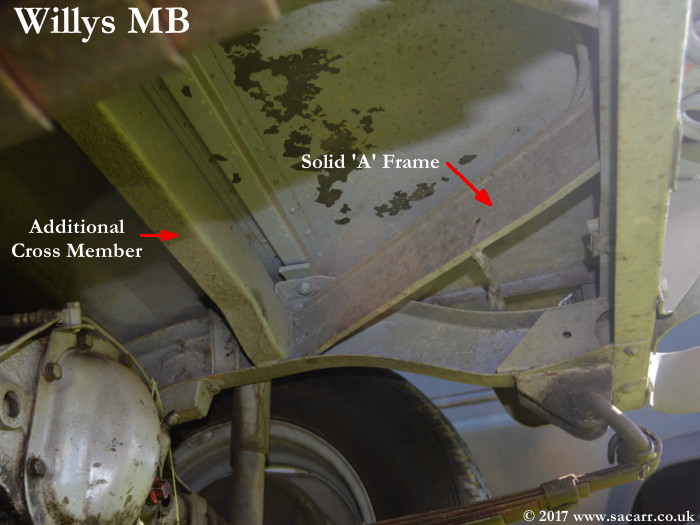 |
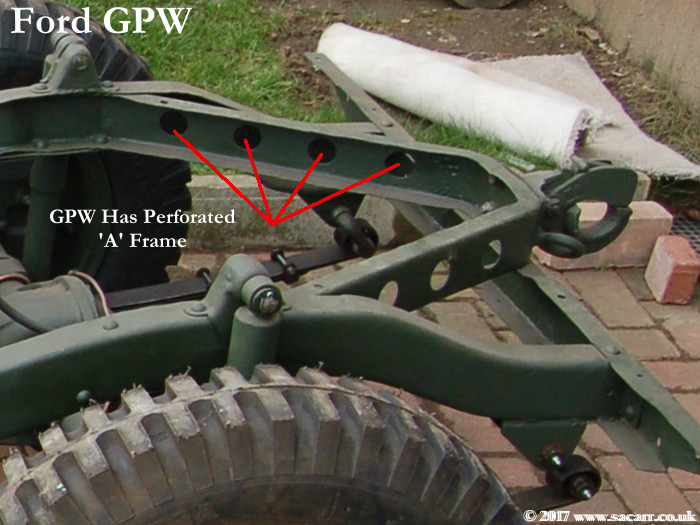 |
| Cylinder
Head
The Jeep cylinder heads were similar in overall design. The M201 head has WOF cast into the head under the oil filter bracket. This stood for Willys Overland France. The M201 head also had additional reinforcing ribs between the head bolts ( arrowed in the second M201 engine picture ). The Willys head has Jeep cast into it near plugs three and four. It doesn't have any reinforcing like the later M201 head. The Ford head has the script 'f' cast into it at the front under the oil filter bracket. Some Go-Devil cylinder heads were bolted down while others had studs and nuts. |
||
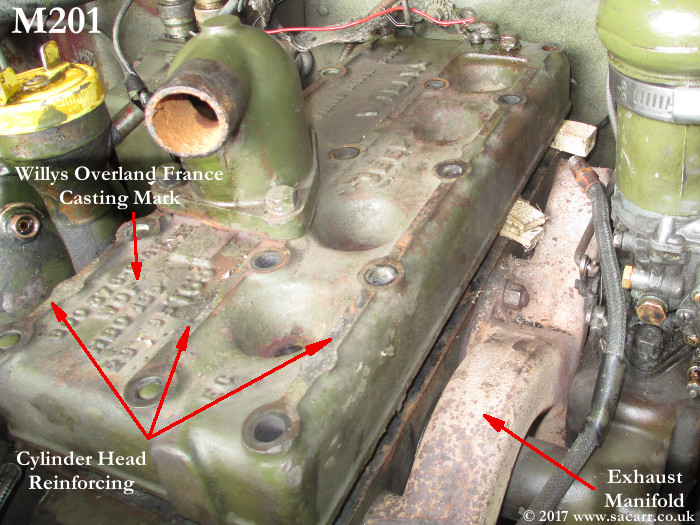
|
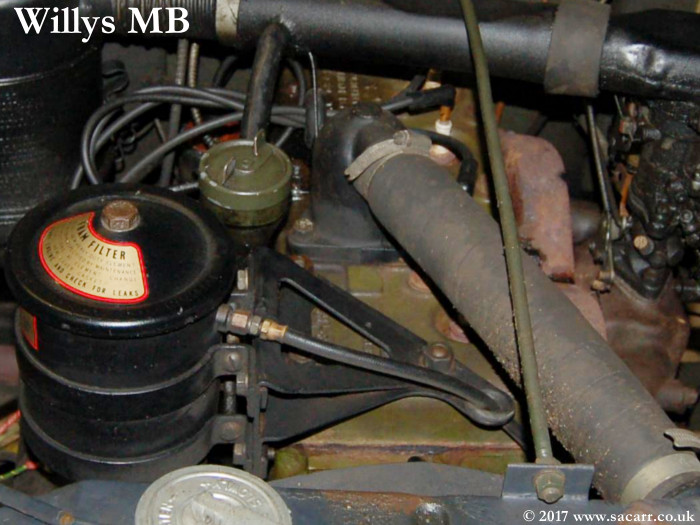
|
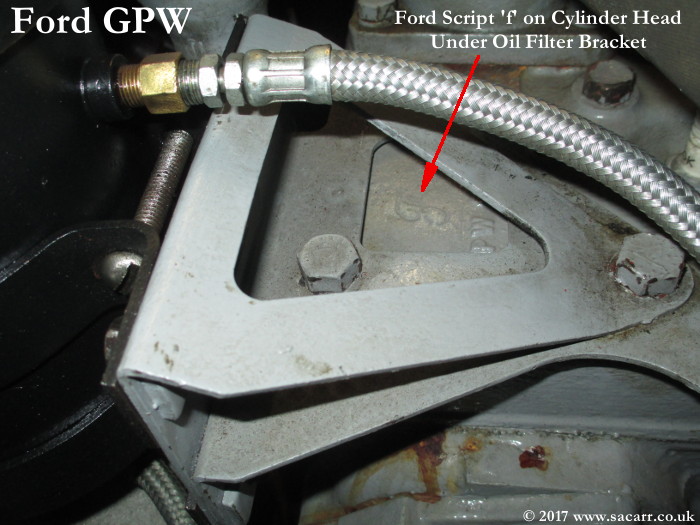
|
| Engine
and Transmission Colour
The M201 and Willys MB engines and transmission were the same green as the vehicle, whether that was NATO green or wartime olive drab. The Ford engine block, bell housing and transmission were Ford Grey, but the transfer case was olive drab. |
||
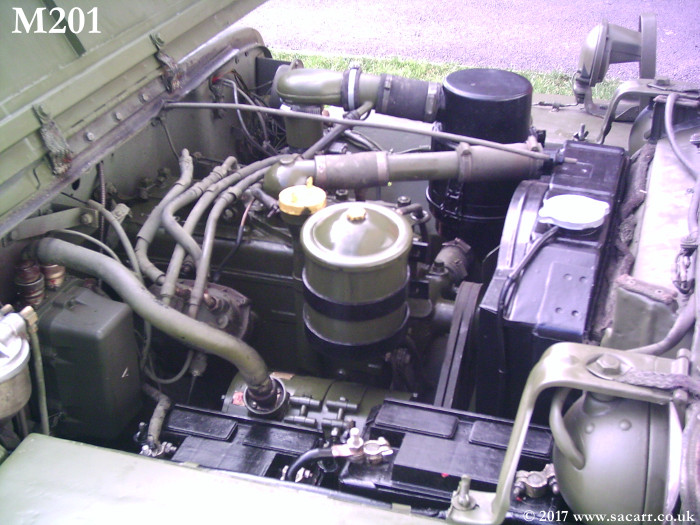 |
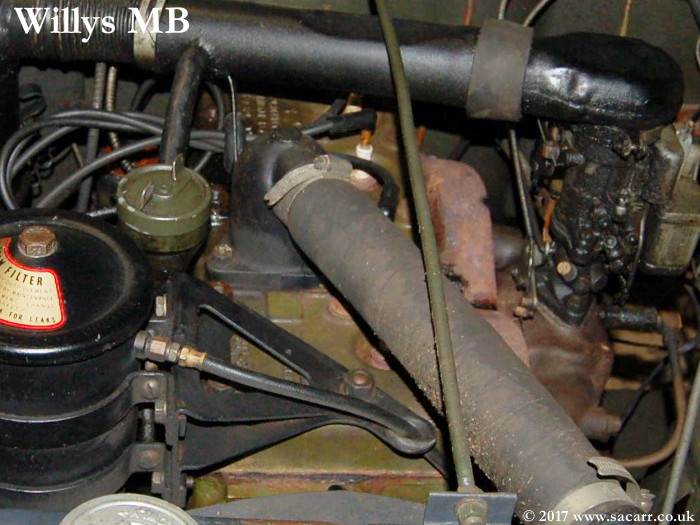 |
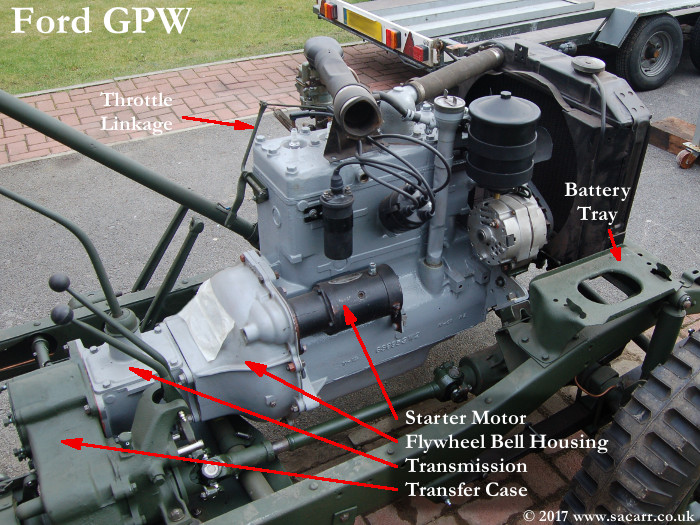 |
| Shock
Absorber Mounts
The chassis mounts for the M201 shock absorbers are made from a section of steel 'U' channel, slightly wider than the chassis, allowing two legs of the 'U' to pass down the sides of the chassis to be welded. The round section bar that the shock fits on to passes through the top of the channel. The Willys MB shock mounts are formed the same way as the M201. The Ford GPW has a two piece pressed steel mount riveted to the chassis, 'though mine has signs of welding along the edges of the steel. The mounts have the Ford script 'f' stamped into the outer flange. |
||
 |
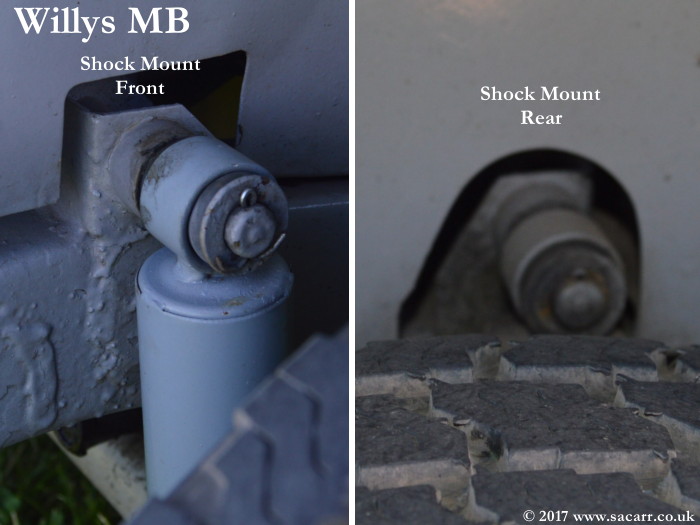 |
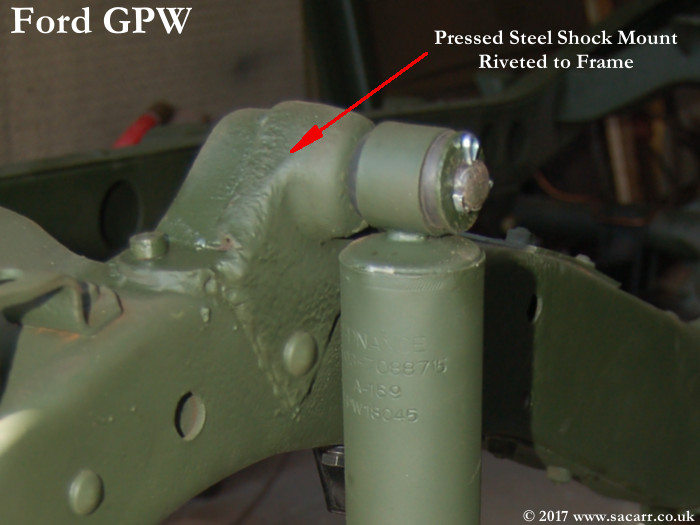 |
| Transmission
Skid Plate
The M201 skid plate was a one piece unit, with five holes along the centre, one of which is enlarged covering the area of the two holes in the centre of the Ford plate. The Willys plate was a two piece unit, the white dotted line shows the two parts. This is the most common seen, but there were a number of different skid plates on the Willys MB's, depending on the date of production and the type of handbrake used. The Ford plate is a one piece unit like the M201, but with a row of six holes along the centre. |
||
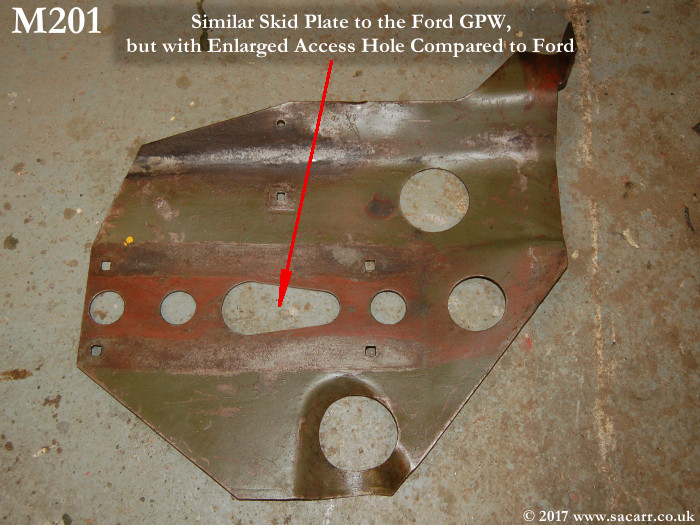 |
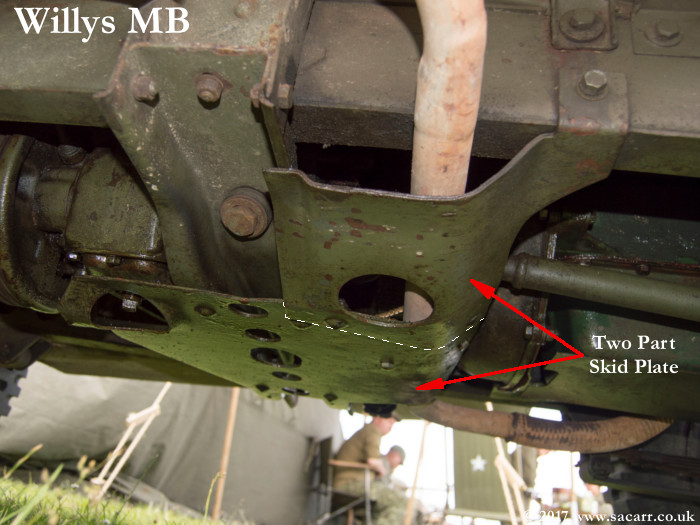 |
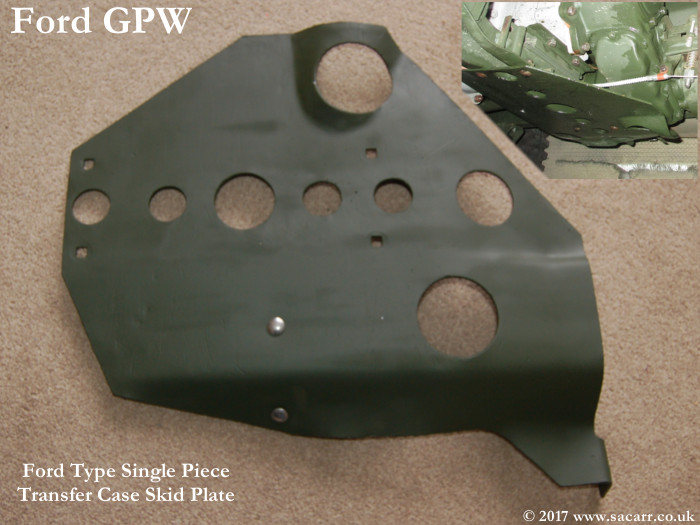 |
